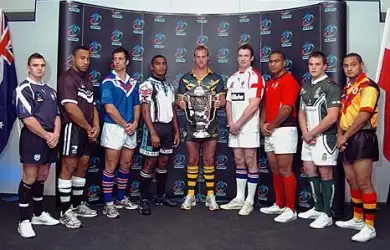World Cup needs to be fair

Before a ball had been kicked, the 2008 World Cup was under criticism from fans and the media for its ten team tournament structure. The fact that three teams could progress into the semi finals from one group of four was scandalous, a mockery to the sport, and downright embarrassing.
And maybe it was. For those unfamiliar to modern day rugby league, we are not in a position to draw up a “fair” tournament and expect attendances, revenue and TV audiences to remain consistent. The 2008 World Cup was a success because it was biased and because the top nations in rugby league were guaranteed to play each other in the early rounds keeping fans interested throughout the four week competition. It generated a fair amount of interest, attendances and TV audiences for the pinnacle of international rugby league. More importantly, it generated enough money to make a profit and wet the appetite of smaller nations for more of the same in the near future. So the news last week that the 2013 World Cup will consist of 14 nations, with 12 being granted automatic qualification, should not be criticised until we have the full facts about the tournament structure.
Rugby League hasn’t been afraid of introducing innovative ideas to draw in new fans and dive into fresh territories, all in the name of expansion. The Magic Weekend was considered by the Premier League, albeit on a larger international scale, in that each team plays one more league game on neutral territory. This shows that the Rugby Football League and the Rugby League International Federation must be doing something right if the smartest businessmen in world sport want to copy an idea from a small sport in the north of England. So what new hair-brained scheme must the International Federation some up with to make the World Cup an even bigger success? Here is one ideal tournament structure for a fourteen team competition.
They can start with including the ten teams that competed in the 2008 tournament. That leaves the RLIF a choice of three teams for two remaining automatic places. The most realistic choices would be Wales, who won last year’s European Cup against Ireland in the final. The second choice would be the Cook Islands, who surprised everyone in making the final of last year’s Pacific Cup. Finally Lebanon, as they earned a massive amount of credit from neutral fans for their performances in the qualifying process for the 2008 World Cup. If I had to choose which two of the three I would pick now, I’d have to say Wales and the Cook Islands would get automatic qualification into the 2013 World Cup.
It’s important for the top three teams to play each other early and carefully seed the competition so that interest is created early on in the tournament. Therefore a ‘Super Pool’ is the only way to generate interest and talk amongst fans and the media at its group stage. Include Australia, New Zealand, England and the fourth team from the 2011 Four Nations tournament, which would be the last one before the World Cup. From there the remaining ten teams are split into one group of four and two groups of three. Seed the groups carefully again, so that the teams ranked fifth to eighth are in the second pool of four. Have three teams qualify from the two groups of four (pools one and two) and one from the two groups of three (pools three and four,) leaving eight teams remaining in the quarter finals. This ensures that the spectacle of watching the lower ranked teams is kept to the highest standard possible. It gives every team a realistic chance of getting to the quarter finals and minimises the chances of one sided results.
The groups of three should be the sides of the lowest quality, including the two qualifiers in each group. The winners of pools three and four will play the winners of pools one and two. The runners up from pools one and two will play the team finishing third in both groups. Moving onto the semi finals it would be the winner of those games that meet each other in the first semi final, with winners of the first two quarter finals meeting in the remaining semi final.
Following the same style of the 2008 competition in seeding the top teams, it will guarantee competitive games as well as giving the better sides in pools one and two an advantage. As I’ve mentioned countless times already, TV audiences and revenue is what will make the tournament a success in this country. The aim is to build on the success of the 2008 competition and provide international rugby league with a secure long term financial future in all the areas where it is played.